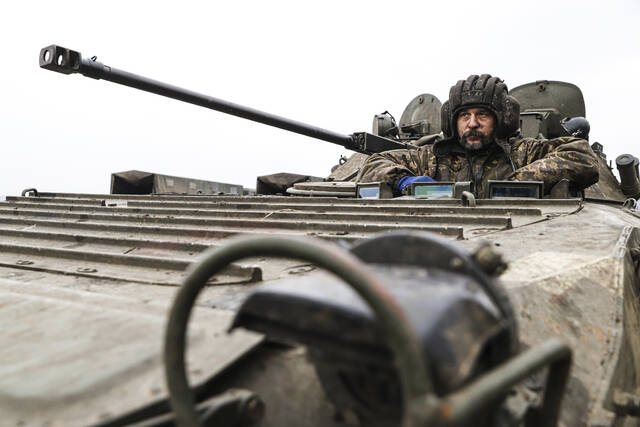Joseph Sabino Mistick: Poland knows about freedom
In the 1950s, the Allegheny County Democratic Party held summer picnics at Pulaski Grove, a long-forgotten wooded patch that carried the name of Casimir Pulaski, a Polish freedom fighter and hero of the American Revolution. The Democratic Party represented everybody, and the picnics were rare and treasured outings for blue-collar families.
Our parents were thinking a lot about freedom in those early years after World War II. Freedom to raise a family and earn a decent living, freedom to choose our own leaders, freedom to chase the American dream and even freedom to have a hot dog in the woods on a warm Sunday afternoon.
It was not unusual in those days for places like Pulaski Grove to carry the ethnic names of the heroes of the cultures that made up our communities, and we all had our own. You can bet that Polish kids knew all about Pulaski.
He had fought the Russians in his own land and was recruited by Ben Franklin and the Marquis de Lafayette to join the American revolution. Here he became the “father of the American cavalry.”
Fighting for freedom is a Polish tradition. In 1944, the Polish 2nd Army Corps, composed of Poles who had been imprisoned in Stalin’s Soviet Union, repeatedly stormed the German position at Monte Cassino in Italy. They fought hand-to-hand and lost over a thousand soldiers — all buried close to the since-rebuilt Benedictine abbey — before planting the Polish flag atop the mountain.
Poles are among the most important leaders in the world right now in the fight against the Russian invasion of Ukraine and Vladimir Putin’s war crimes, welcoming Ukrainian refugees by the millions and supporting the Ukrainian military without flinching.
On Feb. 24, Poland delivered the first Leopard 2 battle tanks to Ukraine. On the same day, Polish Prime Minister Mateusz Morawiecki visited Ukraine President Volodymyr Zelenskyy and tweeted, “On the anniversary of Russia’s vicious attack on Ukraine, I am in Kyiv to give a clear signal of further support in defense of Ukraine.”
Along with Morawiecki’s visit, Newsweek published his article called, “Five Lessons of a Year of War in Ukraine,” in which he warns, “Russia has embarked on its imperial conquest with a single goal in mind: reconstruct the former Soviet sphere of influence regardless of the costs and victims.”
“We must do everything in our power to prevent that most terrible geopolitical nightmare,” he wrote, adding, “Russia’s imperial plans go beyond Ukraine. This war concerns us all.”
There are some members of the United States Congress who would weaken our support for Ukraine. They would let Putin butcher Ukraine. Those congress members can learn a lot from the Polish people. The Poles have chosen up sides here — the way they always do — and they are fighting for freedom.
While leading an American and French cavalry charge against British forces in Savannah, Ga., in 1779, Gen. Casimir Pulaski was mortally wounded. Nearly 50 years after his death, Lafayette placed the cornerstone for the Casimir Pulaski Monument near his final battlefield, where it still stands.
When Pulaski first arrived in America in 1777, he wrote to Gen. George Washington, “I came here, where freedom is being defended, to serve it, and to live or die for it.”
Joseph Sabino Mistick can be reached at misticklaw@gmail.com.
Remove the ads from your TribLIVE reading experience but still support the journalists who create the content with TribLIVE Ad-Free.

